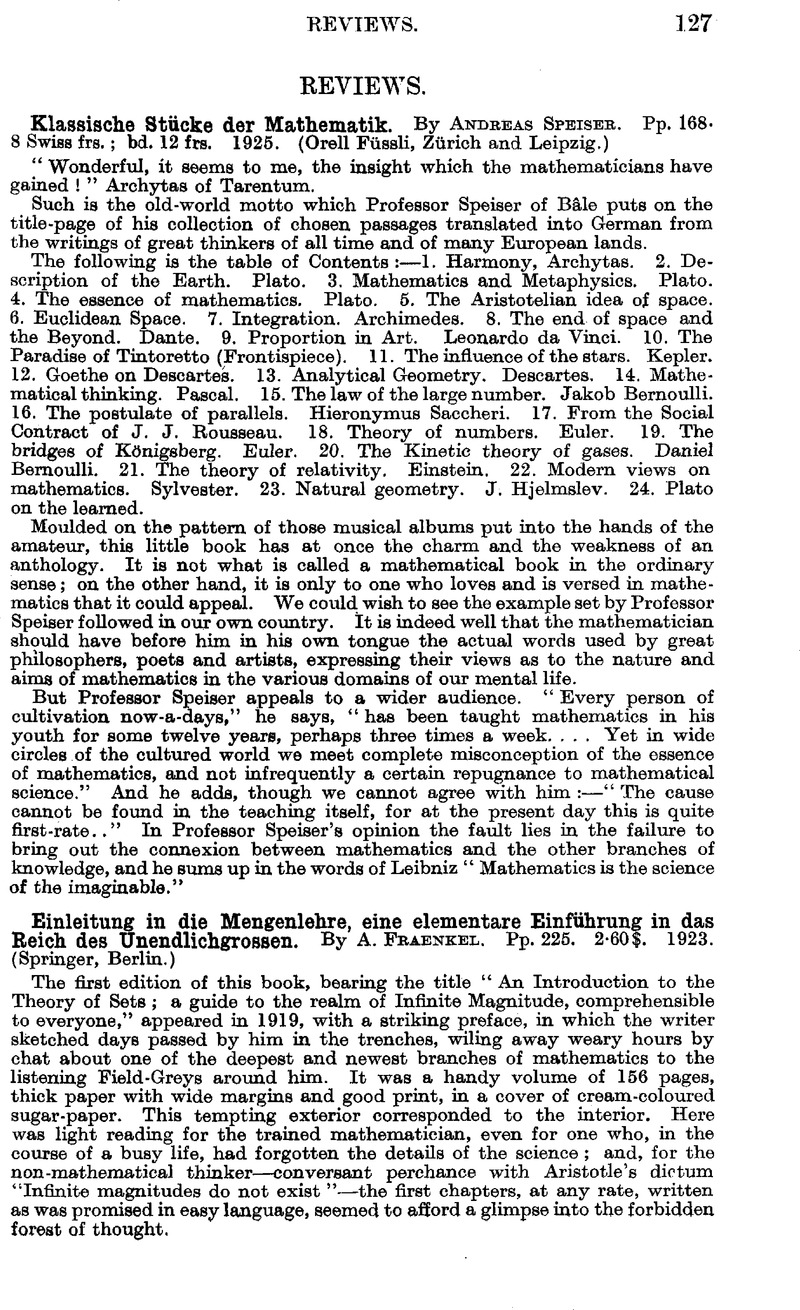No CrossRef data available.
Published online by Cambridge University Press: 03 November 2016

page 128 note * We remark that Georg Cantor (a Jew, born in Russia), is no longer called a “German mathematician,” but referred to Halle, at which German university he lived and died professor. The distinction is a neat one: the Pan-German claim that the geniuses of the world are all or mostly “Germans” is as untenable as the claim of intellectual Germany to be the foster-mother of European intellect is undeniable.
page 128 note † See Professor W. H. Young’s Presidential Address to the london Mathematical Society November 1925.
page 129 note * Which was that given in the first edition of Young’s Theory of Sets and Points, and is being emended in the forthcoming second edition.
page 130 note * Or set in more general work.
page 130 note † The word intervals must in the general case be understood to mean subsets suitably defined.
page 130 note ‡ Tr. by H. Joachim in the Oxford edition of the Works of Aristotle.